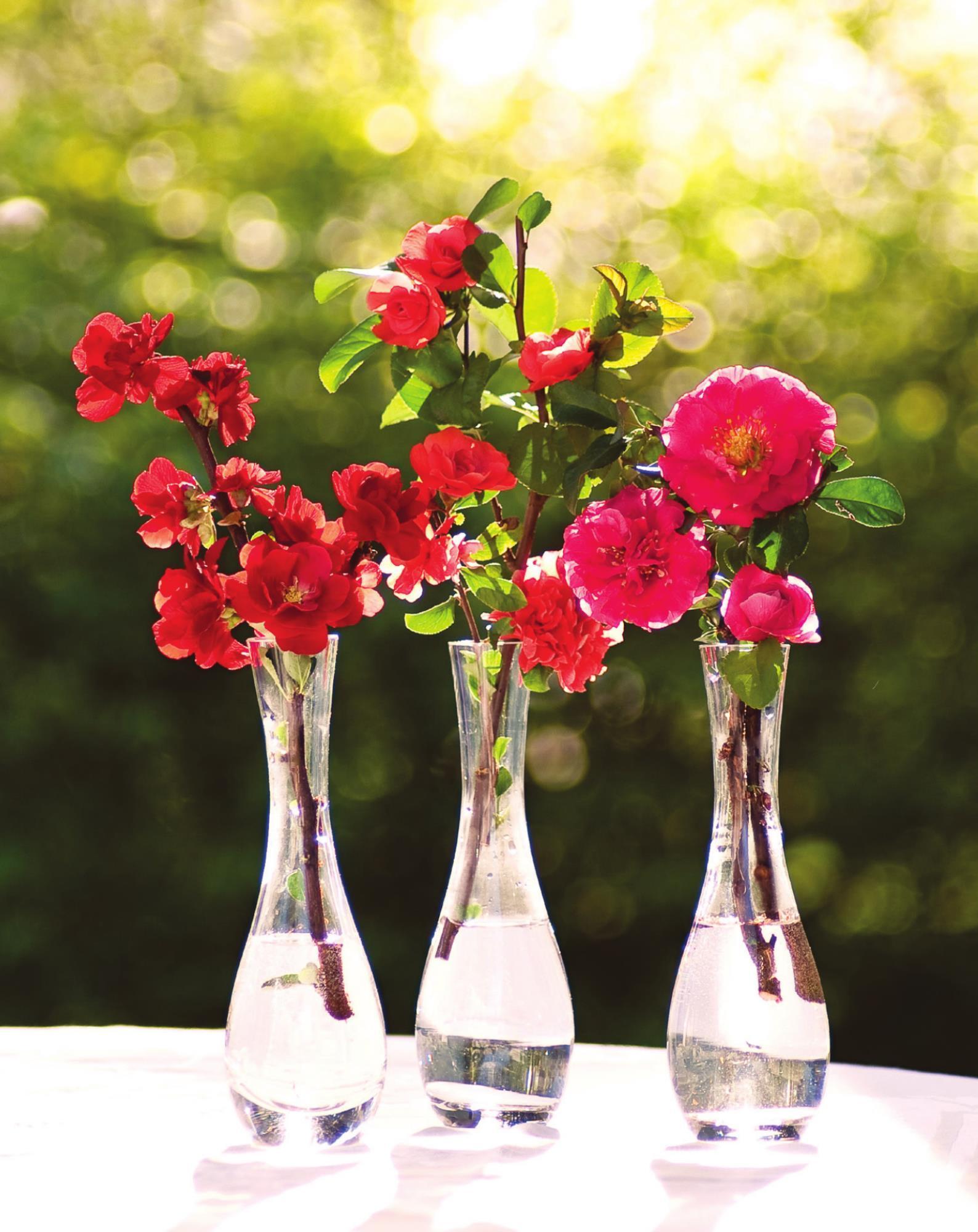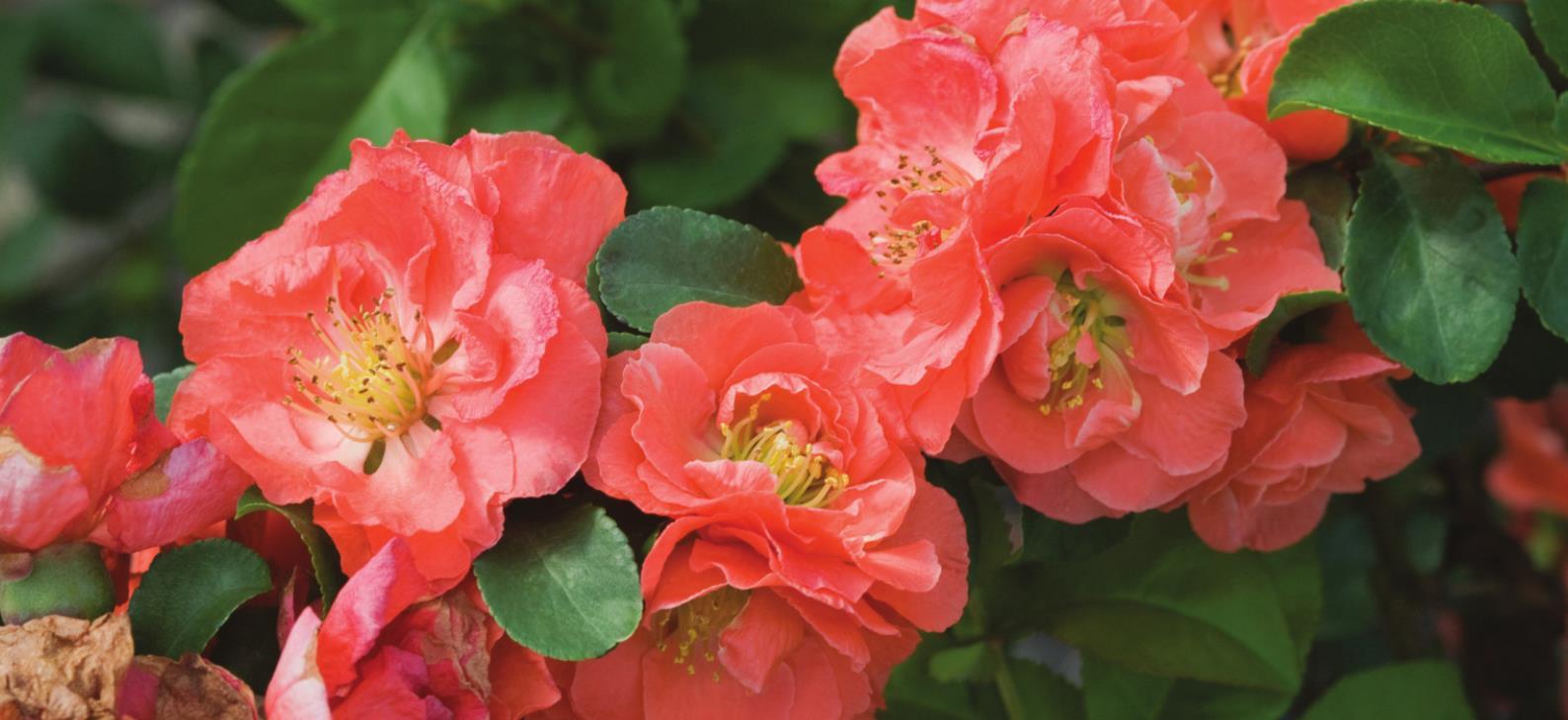
Double Take flowering quince will make a great cut-flowers arrangement for the vase and table centerpiece.


Colorful storm brewing in the spring garden
There has been a storm brewing in the Eastern United States and it is one that will prove to beautify Central Texas landscapes for years to come. The Mountain Horticultural Crops Research Station in Mills River, N.C. are already horticultural heroes of sorts through their breeding. Proven Winners, through their production and marketing, are now bringing the landscape the Double Take Storm flowering quinces with the most shocking blooms you ever imagined. Flowering quinces have a long history in Central Texas and these Double Take selections. Scarlet Storm, Peach Storm, Pink Storm and Orange Storm are perfect for fall or spring planting. They are all double flowered and will cause you to first think camellia.
Botanically speaking, they are all selections of Chaenomeles speciosa which is native to China. It is the breeding at North Carolina State, however, that brings us these shrubs that will reach approximately 6-feet tall and 4-feet wide at maturity, boasting dazzling double flowers with huge petal counts.
The old fashioned flowering quince always seems to be bare of flowers on the tips or tops of the plant, but these blooms that reach up to 2 and a half inches in diameter stretch outward to the tip of the stem. That means the blossoms are almost as large as a tennis ball. They are cold hardy from zones 5-9 and deer resistant.
When you get yours, select a site in full to part sun. These great flowering quinces deserve to be planted in a wellprepared shrub bed. Incorporate 3 to 4 inches of organic matter along with about two pounds of a 5-10-5 fertilizer per 100 square feet of planting area. Till your soil deeply and dig your hole about three times as wide as the rootball but no deeper. Place the flowering quince in the hole and backfill to two-thirds. Tamp the soil and water to settle. Add the remaining backfill to repeat the process, which will get all of the air pockets out and provide a great start for acclimatization of your new shrub.
These plants bloom on old wood so remember to not get pruning happy when they are in their deciduous or dormant state of winter. If any pruning is needed make these cuts after the spring bloom. Of course these make breathtaking cut flowers, so select as needed.
These blooms sequence nicely with spring blooming bulbs like Dutch iris, daffodils and the iridescent blue of the Peruvian lily, Scilla peruviana which is cold hardy to around zero. Try clustering three in front of evergreen hollies. They should partner well with the old-fashioned Chinese snowball viburnum.
To me, the flowering quince has always been that harbinger of spring. It’s the one plant that shouts with its colorful blooms, You have survived winter. Even though I loved those old blooms, they pale in comparison to a plant like Scarlet Storm. Early spring is a great time to head to the garden center and start shopping. Follow me on Facebook @ NormanWinterTheGardenGuy.











